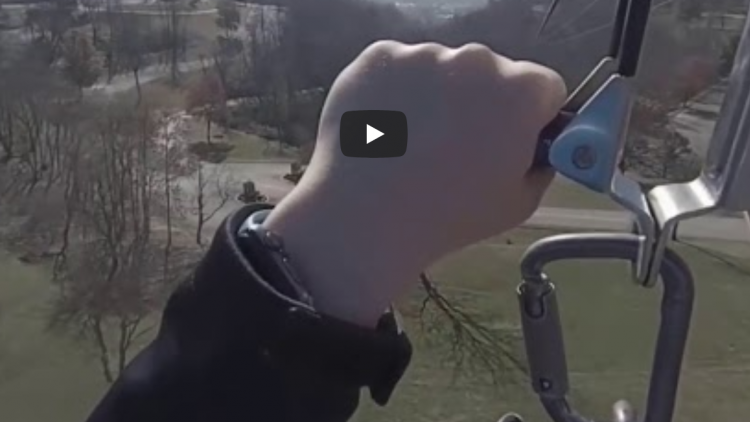At the risk of sounding all hippy-dippy, I think it is important to remember that the strength of our brand is based in how we make people feel.
Feelings open wallets, not logic. That’s why sex sells.
When I’m beginning to work with a client, one of the first things I ask them is to describe their brand to me. Inevitably, 90% of people tell me the same thing.
“We really care about our customers. They know that when they do business with us, they are going to get our very best.”
When I ask them to go deeper or to give examples of things they are doing consistently that fosters this brand experience, I often get vague platitudes at best or blank stares at worst.
This doesn’t mean they are bad business owners or clueless marketing directors. In fact, many are quite successful and leaders in the greater Pittsburgh metro area. They simply have no control of their identity or, at the very least, have an inability to articulate what it is that makes them successful.

One tool I’ve begun adapting from my designer friends is the use of a mood board to begin focusing the direction of the brands I work with. Internal buy-in and understanding of how you want the world to remember you is the first step necessary to build an experience that transcends the marketing department. Mood boards are the first step to creating that understanding.
Here is the quick way to use Pinterest to create a mood board that will focus your identity and lead to a more consistent brand experience.
1. Tell Your Brand’s Truth.
Start your journey by writing down a few phrases that define your company at its very best. These statements should contain strong descriptive words and genuine ideas. Avoid vague statements and general niceties.
Examples of Brand Truths
Outside-the-Box Ingenuity
Edgy Style from Sustainable Materials.
Stress-Free Home Buying
2. Build Your Mood Board.
This part will be really easy or difficult depending on your familiarity with Pinterest. If creating a board on Pinterest sounds like complete nonsensical rubbish to you, no worries. Click here for a helpful video.
I recommend making your board private. This board will be a living, evolving thing and not necessarily something you want everyone on the outside to see. With that being said, the choiceis yours. Keep it private if you want to keep it internal. Make it public if you don’t mind people seeing how the sausage is made.
If you can’t figure out how to make a board private, click here.
3. Just Pin It, Baby!
To get started, you can either search Pinterest utilizing the handy-dandy search bar at the top of your home screen or add the Pinterest extension to your favorite browser and hover over any photo out on the web.
You are searching for things that remind you of your brand identity and desired brand experience. Look for quotes or photos of environments that embod
y the look and feel that you are going for. Search Pinterest for styles and fashion that you imagine your ideal customer or client would wear. What kind of cars do they drive? Where do they live? When you are done, your board should have the look and feel that your company and brand can really connect with.
4. Evaluate and Pin it Down.
Keep pinning until you have 50-100 pins from a wide array of variations on your brand’s theme—color palettes, scenery, fonts, styles, quotes, and emotionally provocative imagery are all strong inclusions—but everything is fair game.
Once you have your initial collection, you will quickly find redundancies. Go back and pare down your board until you only have 1-3 of each type of pin.
As a side note, this i s a great time to create a public board that is labeled something like, “Things that Move Us”. You can add things to that new public board by clicking on the red pin in the right hand corner of each picture and saving it to the new board or any other board you choose.
s a great time to create a public board that is labeled something like, “Things that Move Us”. You can add things to that new public board by clicking on the red pin in the right hand corner of each picture and saving it to the new board or any other board you choose.
Once you are done with the pin or you’ve moved it, just delete it from your mood board by clicking the editing pencil in the left hand corner of each pin.
5. Seek Feedback.
Now that you have your final edits to your mood board, share it with a select group of people.
You can do this directly from the Pinterest board settings by hitting the plus sign under the board title. You can either add current users that you follow or add email addresses.
Ask your focus group to tell you how they feel when they see the board. What emotions does it evoke? What does it remind them of? What would they think the person or company was like based solely on the content of the board?
If the answers you receive aren’t in line with the truths you wrote in step one or the feelings you were trying to invoke when you were building, you need to go back and find new pins until you get it right.
6. Publish and Pass it Around.
Once you have it right, hand off access to the board to someone familiar with design and tell them to arrange.jpg) the pins on your board into something that is visually appealing. Once the piece is completed by your designer, show it around the office, hang it on bulletin boards, or send it as a pdf to your company email list.
the pins on your board into something that is visually appealing. Once the piece is completed by your designer, show it around the office, hang it on bulletin boards, or send it as a pdf to your company email list.
If you’ve done your job, you will have taken the first step toward creating an identity that everyone understands at a very human level, and you and your team can begin having more detailed conversations about how to make it a tactical and operational reality.


